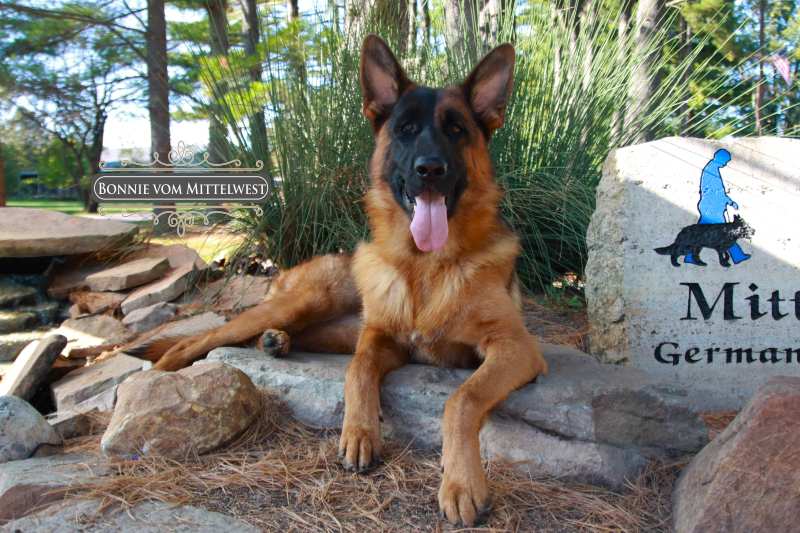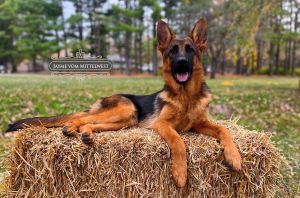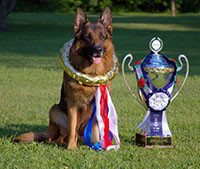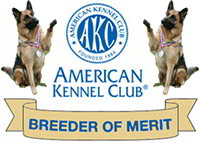Key Takeaways:
- German Shepherds and cats can live together successfully when you take a slow, structured approach.
- Introduce them gradually, supervise early interactions, and give each pet its own safe space.
- Consistent training, impulse control, and plenty of exercise help your dog stay calm around your cat.
- Be prepared for challenges such as chasing, rough play, or territorial disputes, and address them early to prevent tension.
Many families successfully keep German Shepherds and cats under the same roof, but a smooth relationship between the two takes planning. The breed’s history as a herding and working dog means they can be energetic and alert, traits that may influence how they respond to smaller animals.
So, if you’re asking, are German Shepherds good with cats? The answer depends on selecting a dog that fits the household and introducing the two animals gradually and thoughtfully. Knowing the breed’s temperament, recognizing individual personalities, and setting up the household for success are all important steps toward helping both pets feel secure.

Temperament & Instincts That Influence Cat Compatibility
German Shepherds have a strong working background, which means their natural instincts can sometimes guide their behavior around other animals. While every dog is an individual, several traits influence how they respond to cats.
- Herding Drive: Many German Shepherds have a natural tendency to chase moving animals, including cats.
- Protectiveness: Their loyalty can extend to family pets once a bond is formed.
- Trainability: They respond well to obedience training, which can help manage unwanted chasing or rough play.
- Sensitivity: They notice changes in the household and can become curious or cautious around new animals.
A German Shepherd that grows up in a structured, loving environment can learn to live calmly with cats. This is especially true if early training addresses impulse control and respectful interaction.
How To Introduce A German Shepherd To A Cat
Bringing a GSD and a cat together requires patience, planning, and supervision. A rushed introduction increases stress for both animals and can make it harder for them to develop a positive relationship. Here’s how to approach the introduction so they feel safe and comfortable:
Step 1: Prepare Separate Spaces
Before the first meeting, set up separate areas for each pet. Your cat should have access to safe spaces, such as elevated perches or gated rooms, where the dog cannot follow. It gives the cat control over interactions and a place to retreat when needed.
Step 2: Start With Scent Exchange
Allow each animal to become familiar with the other’s scent before meeting face‑to‑face. Swap bedding or gently rub a cloth on one pet and place it near the other. Doing this helps them begin to recognize each other without direct contact.
Step 3: Use Controlled Visual Introductions
When both pets seem relaxed with scent exchange, allow them to see each other from a distance while your German Shepherd is on a leash. Keep these sessions short and positive, using treats and calm praise for good behavior.
Step 4: Gradually Increase Supervised Interaction
If the first visual meetings go well, move to short, closely supervised interactions in the same room. Keep your German Shepherd on a leash until you are confident there is no risk of chasing or rough play.
Step 5: Monitor Ongoing Behavior
Even once they are comfortable together, supervision remains important during the early months. Watch for signs of stress in either animal and separate them if necessary.
Taking a gradual, structured approach gives your German Shepherd and cat the best chance to adjust to each other. By following these steps, you can help them build a respectful and comfortable relationship over time.
Training Your GSD To Support Peaceful Coexistence
Successful cohabitation between a German Shepherd and a cat starts with consistent, well‑structured training. The following practices can build a foundation for safe and respectful interactions:
Teach Basic Obedience Commands
Commands like “sit,” “stay,” “leave it,” and “come” help you manage situations where your dog shows too much interest in the cat. Consistent training also reinforces your role as the leader, making it easier for your dog to follow your cues.
Reward Calm Behavior
When your German Shepherd ignores the cat or behaves gently around it, offer praise, treats, or a favorite toy. This positive reinforcement teaches your dog that calm behavior earns rewards.
Provide Sufficient Exercise & Mental Stimulation
A tired, mentally engaged dog is less likely to fixate on the cat. Daily walks, training games, and puzzle toys help redirect your German Shepherd’s energy into productive outlets.
Managing Prey Drive & Play Energy
Some German Shepherds have a strong instinct to chase, which can make living with cats challenging. Interrupt chasing immediately, redirect to an appropriate activity, and keep play calm and structured. Providing the cat with safe spaces helps prevent conflict and supports peaceful coexistence.
With consistent practice, these training methods teach your German Shepherd how to live calmly alongside a cat. Combined with supervision and gradual introductions, they can help the pets feel more comfortable and secure in the same home.
Potential Challenges To Be Aware Of
Even with training and careful introductions, some situations can make it difficult for a German Shepherd and a cat to live together comfortably. Recognizing these challenges early helps owners take steps to prevent problems and protect both pets. The following are common issues that may arise in multi‑pet households:
- Chasing Behavior – Some dogs may instinctively pursue smaller animals, especially if the cat runs.
- Over‑Exuberant Play – A strong, energetic dog can unintentionally injure a cat during play.
- Territorial Disputes – Either pet may become possessive over food, toys, or resting areas, leading to tension.
- Stress For The Cat – Cats may hide, avoid certain areas, stop eating, or show other stress‑related behaviors if they feel unsafe.
- Adjustment Delays – Some pairs take weeks or even months before they are comfortable around each other, requiring ongoing supervision.
By staying alert to these possibilities, owners can address concerns quickly, adjust routines when needed, and maintain a safe, balanced environment for both pets. This proactive approach helps prevent misunderstandings and encourages a more positive relationship over time.
Safety Tips For Households With Dogs & Cats
Ensuring that both your German Shepherd and your cat feel secure requires attentive, consistent management. A structured approach reduces stress for them and lowers the risk of conflict. The following safety tips can help create a balanced, respectful home environment:
- Supervise early interactions and never leave the dog and cat together unsupervised until you are confident in their comfort with each other.
- Separate the pets if there is any uncertainty about their behavior until more progress is made.
- Watch for signs of discomfort, such as a stiff posture or intense staring from the dog, or flattened ears and a tucked tail in the cat.
- Provide each pet with safe spaces where they can retreat without being disturbed, such as gated rooms or elevated perches for the cat.
- Redirect the dog’s excitement before it escalates, especially during play or greetings.
By applying these measures consistently, you help both animals feel respected, secure, and more willing to share the same home. Over time, this proactive approach can lead to a calmer, more trusting relationship between your German Shepherd and your cat.
Final Thoughts: Are German Shepherds Good With Cats?
If you’re thinking about bringing a German Shepherd into a home with a cat, know that it can work, but it’s something you have to set up for success. Take your time with introductions, keep those first meetings short and supervised, and give the pets spaces they can call their own. Some dogs will surprise you and settle in right away, while others need weeks or even months to feel completely comfortable.

Your goal isn’t to force a friendship but to create an environment where both feel safe and respected. Starting with a dog that already has a steady temperament and early socialization makes a big difference, and that’s exactly the kind of start we focus on at Mittelwest German Shepherds.
How We Help You Create A Harmonious Multi‑Pet Home
Living with both a German Shepherd and a cat is much easier when you start with a dog that has the right foundation. At Mittelwest German Shepherds, we raise puppies to be adaptable, confident, and well‑mannered, qualities that make life in a multi‑pet home smoother. From an early age, our puppies experience a variety of sights, sounds, and situations, which helps prepare them for meeting and living with other animals.
When you bring one of our dogs home, we give you practical guidance for those first introductions and beyond. Our goal is for your German Shepherd to settle in as a steady, respectful presence. Reach out to us and take the first step to a happy multi-pet home.

Julie Martinez is a German Shepherd breeder and the owner of Mittelwest German Shepherds in Wonder Lake, Illinois. She breeds German Shepherd Dogs under the “vom Mittelwest” kennel name and is listed as a breeder on the AKC Marketplace. Through her breeding program, Julie focuses on German-bred bloodlines and works with owners who value structure, temperament, and real-world working ability. She is also involved in local working-dog training through the Wonder Lake Schutzhund Club, where Mittelwest supports hands-on development such as tracking and club training.













